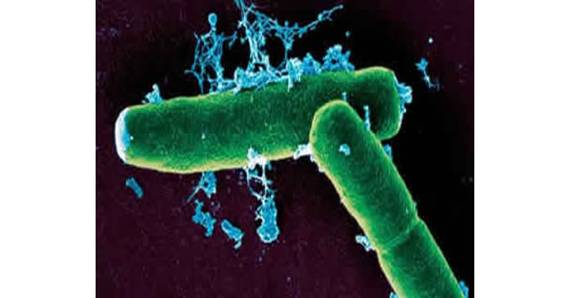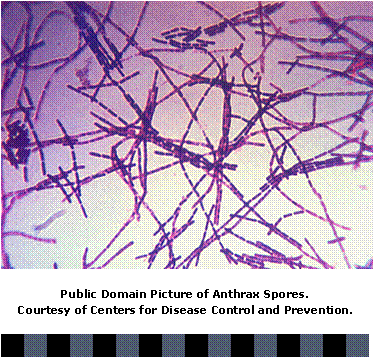
|
Background Information |
|
Bacillus anthracis, the bacteria responsible for causing the disease known as Anthrax, is a very large, Gram-positive, non-motile, rod shaped bacterium. Sporulation of the bacteria requires the presence of free oxygen, thus the reason why it can remain alive in the soil for so long. It has been found that all stages of anthrax reproduction can take place in human/animal carriers or in the soil. The reproductive cycle includes spore germination, bacterial reproduction (mostly asexual), and formation of new spores. It was the first bacterium proven to be the cause of a disease. |

|
Bacillus anthracis |
|
Feel free to take a trip through the past, present, and future of Anthrax. Covered in this website includes scientific classification of Bacillus anthracis, a phylogenetic tree, a short history surrounding Robert Koch, little-known facts, and many more interesting details concerning Anthrax. If you have any questions, concerns, or spot any errors, feel free to send me an email. The link can be found below. Enjoy!! |
|
While Anthrax most commonly infects cattle, sheep, goats, horses, pigs, deer, rats and birds, humans can contract Anthrax in three different ways. For more information, see A Deadly Bacterium and A Threat to Humans. |

|
According to the Centers for Disease Control and Prevention, anthrax is one of the diseases plaguing our world today that could pose a substantial threat to the human population and to human health if it ever were to be wrongfully used. The requirements to become a part of this list include the following: potential to inspire a sense of panic amongst the public, death rate caused by infection, and ease of transmission. |
|
Rod-shaped vegetative state of Bacillus anthracis. |


|
Page last updated : April 24, 2008 |
|
Click here to link back to multipleorganisms.net and search for different organisms. |
|
Interested in learning more about the fine institution I attend? Click here to link to the University of Wisconsin—La Crosse’s home page. |